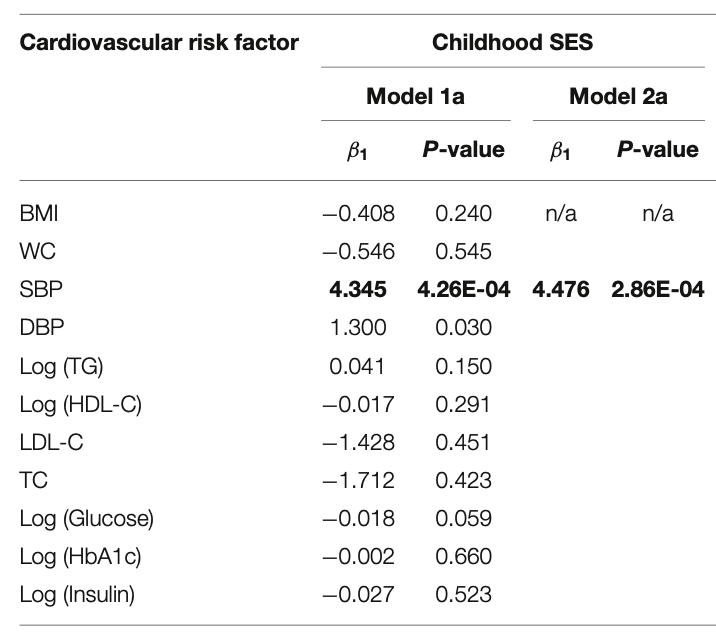Abstract
Overview Low socioeconomic status (SES) and living in a disadvantaged neighborhood are associated with poor cardiovascular health. Multiple lines of evidence have linked DNA methylation to both cardiovascular risk factors and social disadvantage indicators. However, limited research has investigated the role of DNA methylation in mediating the associations of individual- and neighborhood-level disadvantage with multiple cardiovascular risk factors in large, multi-ethnic, population-based cohorts.
Materials and Methods We examined whether disadvantage at the individual level (childhood and adult SES) and neighborhood level (summary neighborhood SES as assessed by Census data and social environment as assessed by perceptions of aesthetic quality, safety, and social cohesion) were associated with 11 cardiovascular risk factors including measures of obesity, diabetes, lipids, and hypertension in 1,154 participants from the Multi-Ethnic Study of Atherosclerosis (MESA). For significant associations, we conducted epigenome-wide mediation analysis to identify methylation sites mediating the relationship between individual/neighborhood disadvantage and cardiovascular risk factors using the JT-Comp method that assesses sparse mediation effects under a composite null hypothesis.
Results In models adjusting for age, sex, race/ethnicity, smoking, medication use, and genetic principal components of ancestry, epigenetic mediation was detected for the associations of adult SES with body mass index (BMI), insulin, and high-density lipoprotein cholesterol (HDL-C), as well as for the association between neighborhood socioeconomic disadvantage and HDL-C at FDR q < 0.05. The 410 CpG mediators identified for the SES-BMI association were enriched for CpGs associated with gene expression (expression quantitative trait methylation loci, or eQTMs), and corresponding genes were enriched in antigen processing and presentation pathways.
Conclusion
Our findings support the hypothesis that DNA methylation acts as a mediator between individual- and neighborhood-level disadvantage and cardiovascular risk factors, and shed light on the potential underlying epigenetic pathways.

Paper:
doi: 10.3389/fcvm.2022.848768